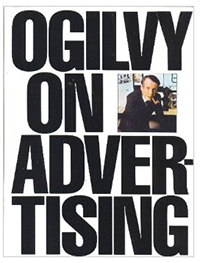Ogilvie on Ogilvy on Advertising (Native and Otherwise)
- David Ogilvie thought the more an ad looked like editorial content, the more likely that consumers would read and believe it
- Fast-forward to 2015, and David Ogilvy could be keynoting a conference on content marketing
- Long-form writing is back in vogue, and our biggest problem as content marketers is finding competent writers to produce it
I’ve always had an affinity for David Ogilvy (could it be something about the name?), and I recently came across an old copy of Ogilvy on Advertising – a required text for when I studied advertising in college. Back then, Ogilvy’s philosophy seemed a bit passé. He favored long-copy ads and traditional layouts, and generally frowned on humor and reverse type (for good reason). He believed that the more an ad looked like editorial content, the more likely that consumers would read it and find it believable. How delightfully old-fashioned his advice seemed!
 Fast-forward to 2015, and David Ogilvy could be keynoting a conference on content marketing. Long-form writing is back in vogue, and our biggest problem as content marketers is finding competent writers to produce it. The more content looks and feels like editorial, the better. Native advertising takes Ogilvy’s idea a step further in that the ads are actually authored by journalists (who seem happy to tear down the cubicle wall between the advertising and editorial departments). Whether that’s a good idea in the long run is not clear, but that is where the money is going.
Fast-forward to 2015, and David Ogilvy could be keynoting a conference on content marketing. Long-form writing is back in vogue, and our biggest problem as content marketers is finding competent writers to produce it. The more content looks and feels like editorial, the better. Native advertising takes Ogilvy’s idea a step further in that the ads are actually authored by journalists (who seem happy to tear down the cubicle wall between the advertising and editorial departments). Whether that’s a good idea in the long run is not clear, but that is where the money is going.
In a fit of nostalgia, I couldn’t resist sharing a few more Ogilvyisms that are just as relevant today as they were in Don Draper’s heyday. Feel free to enjoy a scotch while reading this in honor of the kilt-wearing forefather of content marketing:
“Advertising people who ignore research are as dangerous as generals who ignore decode signals.” Ogilvy did a stint at Gallup early in his career and became an advocate for the value of audience research. I’m sure he would be shocked at the number of B2B companies that spend millions on marketing campaigns without doing a single buyer interview or survey. So the next time someone suggests, “Oh, this research stuff takes too much time – let’s just go with our gut!” put down your Manolo Blahnik and demand at least a few in-depth interviews with friendly customers. It won’t take much time, and it will be well worth the effort.
“Tell the truth, but make the truth fascinating. You can’t bore them into buying your product.” One of Ogilvy’s most famous headlines – “At sixty miles per hour, the loudest noise in this new Rolls Royce comes from the electric clock” – is an example of a fascinating truth. It was lifted from an article published in a car magazine some 20 years earlier, showing that Ogilvy also understood the power of influencers to add credibility to facts (as long as the influencers were not perceived to have been paid to endorse the product, as in this ill-advised Eleanor Roosevelt margarine commercial). Precise, interesting facts beat jargon and puffery any day of the week.
“In the modern world of business, it is useless to be a creative, original thinker unless you can also sell what you create.” Ogilvy wasn’t anti-creativity, but he passionately believed that the ability to drive sales was the ultimate test of an ad (or a marketing campaign or a piece of content or whatever). Having worked as a door-to-door salesman as a young man, he understood first-hand what it takes to (literally) get in the door and close the deal. He authored what some consider the finest piece of sales enablement ever created – The Theory and Practice of Selling the AGA Cooker. It’s worth a read for gems like this: “Learn to recognize vegetarians on sight. It is painful indeed to gush over roasting and grilling to a drooping face which has not enjoyed the pleasure o a beefsteak for several years.”
Hungry for more practical advice on content marketing, influencers and/or communications best practices? Stop by the Strategic Communications Management page, and check out our webcasts on content strategy and influencers.